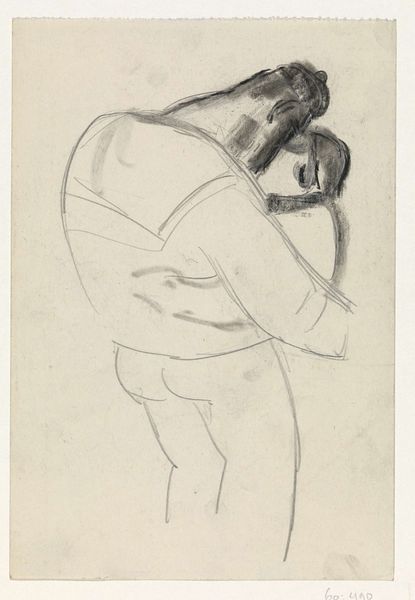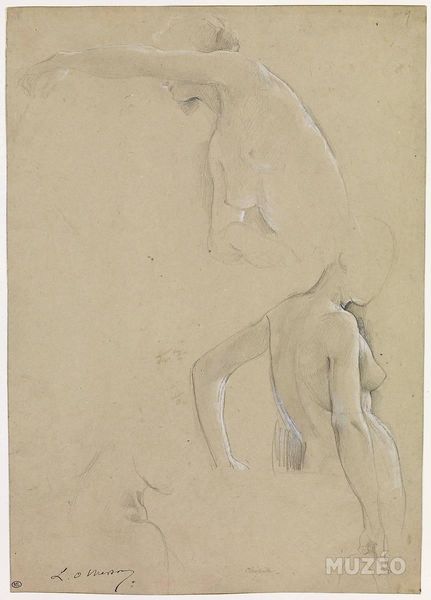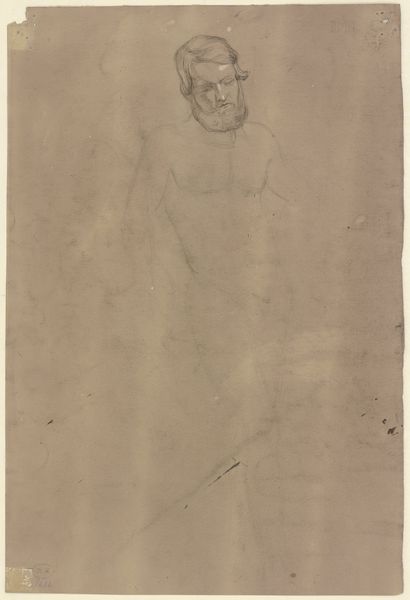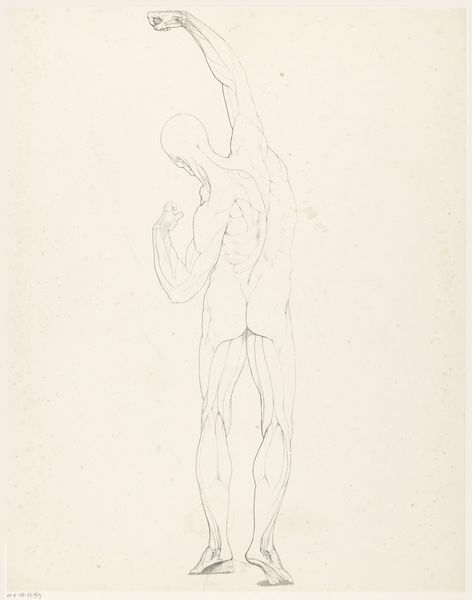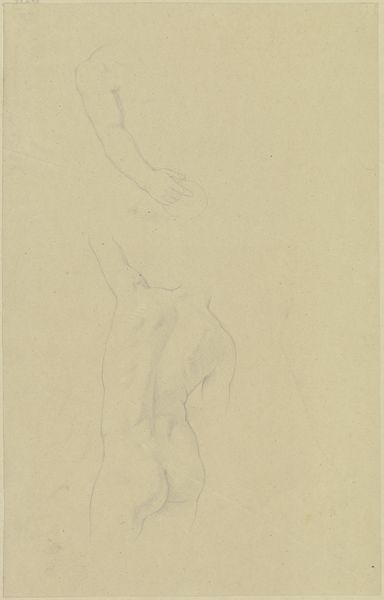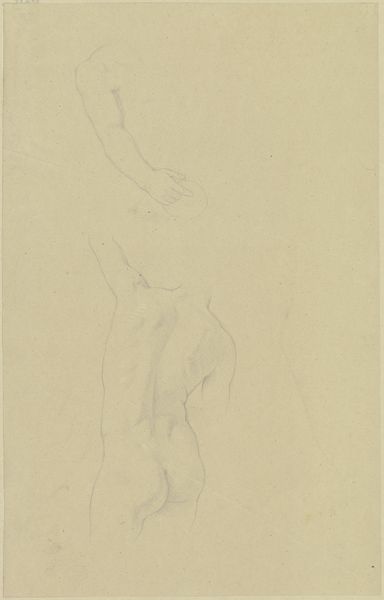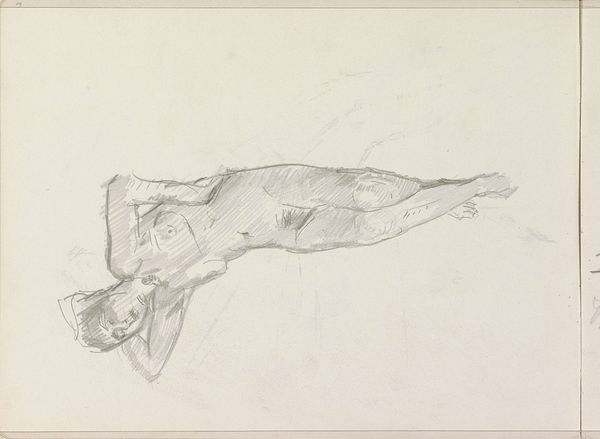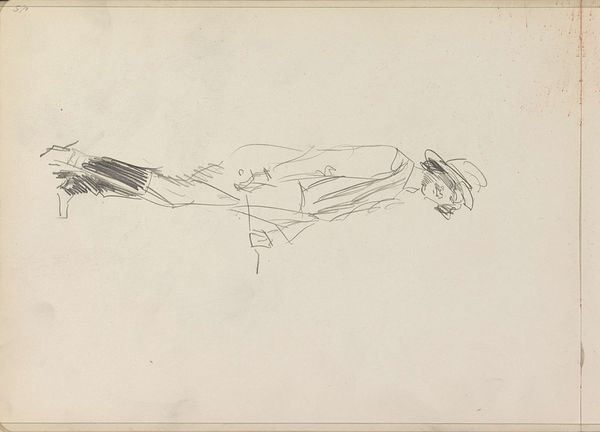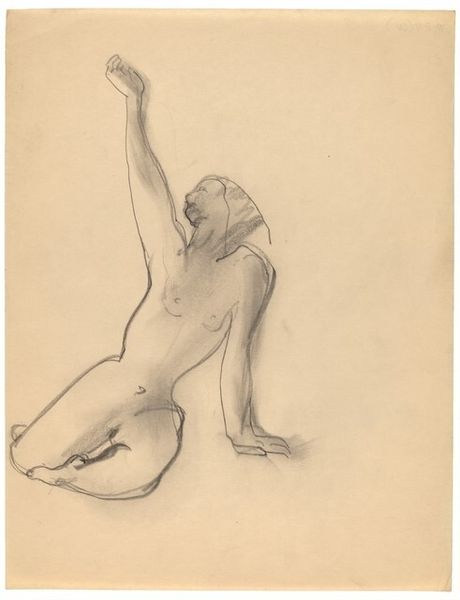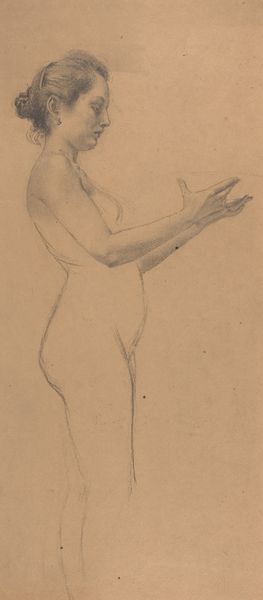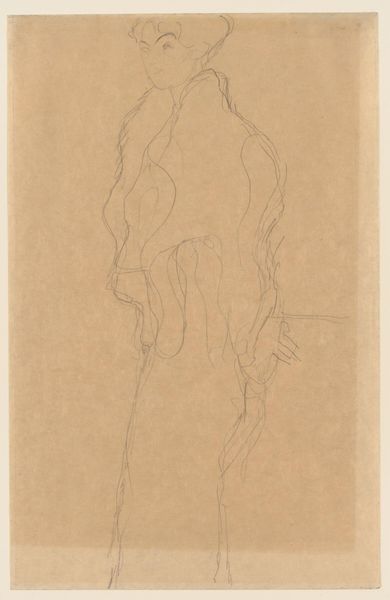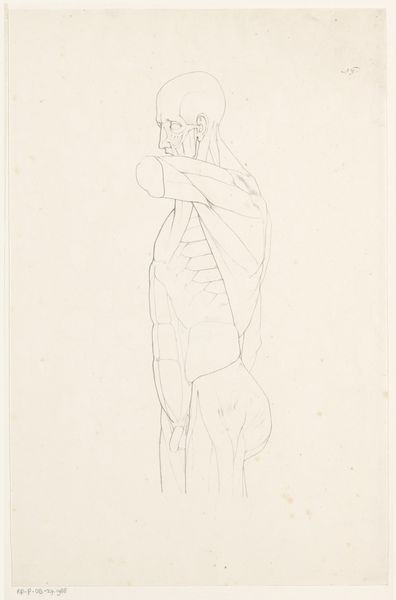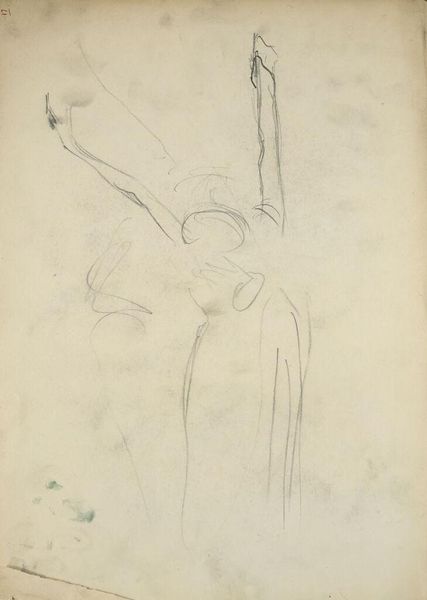
drawing, pencil
#
portrait
#
drawing
#
pencil sketch
#
pencil drawing
#
pencil
#
portrait drawing
#
academic-art
#
nude
#
realism
Dimensions: height 490 mm, width 336 mm
Copyright: Rijks Museum: Open Domain
Curator: Here we have a pencil drawing by Willem de Famars Testas titled "Vooroverbuigende vrouw," created sometime between 1844 and 1896. Editor: My first impression is one of quiet introspection. There's a subdued energy to the lines, an incompleteness that draws me in. It almost feels vulnerable. Curator: Yes, I agree. There is a compelling humility in its raw form. The artist seemingly captures a moment of vulnerability, perhaps even of constraint, reflecting a time where the female body was often policed and presented within strict social boundaries. Editor: The bowed head is especially potent, a near-universal symbol of submission or shame. But look at the angle of her back and the musculature indicated—there's a subtle strength being conveyed as well. Is she yielding, or poised? Curator: That’s a critical point. It might be about resilience under constraint. We can consider that, at the time, academic art was obsessed with the "ideal" body, yet Testas presents us with an intimate, imperfect figure. Her very posture embodies a negotiation between social expectations and personal autonomy. Editor: Absolutely. And the use of pencil further underscores this. It speaks to process, to study. The barest indication of the stool she kneels on also enhances that sense of something unfinished. Perhaps it signals an act caught between private ritual and a performative moment. What is the iconography behind kneeling and what could this signify at the time of its creation? Curator: That’s a fruitful line of inquiry. One could investigate if this drawing served as preparatory study or a commentary on social and cultural restrictions of the female body within and outside artistic expression. It provokes considerations on both art historical practice and the represented lived experience. Editor: Considering it with fresh eyes, I notice a haunting familiarity. So, perhaps this simple sketch becomes not only a time capsule of its creation, but it has continued reverberations—suggesting lasting power relations? Curator: A reminder of struggles that echo through generations. It underscores the continuous need to critically examine representation, power, and the stories we tell through art. Editor: It speaks volumes even in its deliberate understatement. The art lives in those nuanced shades.
Comments
No comments
Be the first to comment and join the conversation on the ultimate creative platform.
